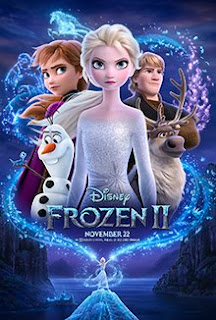Hagar was an Egyptian slave to Abraham and Sarah. A slave
with little power to resist when Sarah gave her to her husband in order to have
a child through her. Despite being a slave, her pride overtook her, and she
paid dearly for that mistake. As soon as Hagar discovered her pregnancy, she
began to lord it over Sarah, who in turn, mistreated her so badly that Hagar
ran into the vast desert to escape. Her story is told in Genesis 16 and Genesis
21:8-21. What is her story? What were her strengths and weaknesses? What are
the lessons we can take from her experience?
Her story begins as a slave, given to Abraham and Sarah when
they left Egypt. It was a common practice in which slaves were often captives
from war, given to pay debts, purchases and in some cases, voluntary. Sarah
must have had some affection for Hagar in order to chose her as her surrogate. What
was her reaction to Sarah’s plan? Was she disgusted? Abraham was an old man and
she was a young girl. Was she afraid? She may have thought about the consequences
if she too couldn’t conceive. I don’t know if her reaction would have been
happiness or joy. She may have wanted to say no and resist but having very
little power, she would ultimately have to going along with Sarah’s plan. The
pregnant Hagar began to despise Sarah, although the Bible doesn’t tell us why,
but I think we could speculate her reasons. Perhaps her lose of control. She
was having a child that she didn’t chose to have and technically wouldn’t be
hers to raise. He or she would be raised as Abraham’s and Sarah’s child, not
Abraham’s and Hagar’s. Although, ultimately, she raises her son, Ishmael as
Sarah would send them away once Isaac arrived (Genesis 21:10). She is last seen
in Scripture, securing a wife for her son (Genesis 21:21).
Hagar’s main strength is she obeyed God’s voice as soon as
she heard it (Genesis 16:13) as she recognized that God is the one who sees her
and now, she sees Him. One of Hagar’s main weaknesses is that she ran when
things got tough. She ran when Sarah began to mistreat her. Running away into a barren and unpopulated
desert shows her desperation to escape. Anything or anywhere was better than
being mistreated by Sarah and, by his indifference, Abraham (Genesis 16:6).
Escape is usually our most tempting solution to life’s problems. To run and
hide with the hopes that with time, they will disappear. Escape is only a
temporary fix, ultimately, we all must turn around and face the music. Although
Hagar’s problem was caused by someone else, she couldn’t run from it. Another
weakness, her pregnancy, and later her son, brought our strong feelings of
pride and arrogance that she was mistreated by Sarah and later banished with
her son from the camp (Genesis 16:4 and Genesis 21:8-10).
There are two lessons we can take from Hagar’s story. First,
God is faithful to his plan and promises, even when humans complicate the
process. Abraham and Sarah were promised a child (Genesis 15:4) and when it
didn’t happen on Sarah’s timeline, she decided to take matters into her own
hands. Even though Ishmael wasn’t the promised son, He did promise Hagar that
her son would be the father of a great nation (Genesis 21:18). Second, God
shows himself as one who knows us and wants us to know Him. After she became
pregnant and ran from Sarah, God sent an angel who told her God’s plan for her
child, a son to be named Ishmael (Genesis 16:11-12). God called out to Hagar
again after she and Ishmael had been banished from the camp. He repeated his
promises that Ishmael would be the father of a great nation and opened her eyes
to a well in the desert so that they may survive (Genesis 21:17-19).
In conclusion, Hagar was a woman who had very little say or
power in what happened to her. As a slave, she couldn’t refuse her mistress’s
demands and when things got tough, she ran from her troubles. She was also a
woman who heard God’s voice and responded immediately. She had great faith in
Him when everyone around her had failed. From her story, we learn that God is
faithful to his plan and promises. God also sees and knows us and wants us to
see and know Him. The same God who saw Hagar in the desert and recused her, not
once but twice, is still the God who sees you today.
For further study,
I recommend Hagar:
Rediscovering the God who Sees Me
by Shadia Hrichi
which is available in
paperback and eBook































